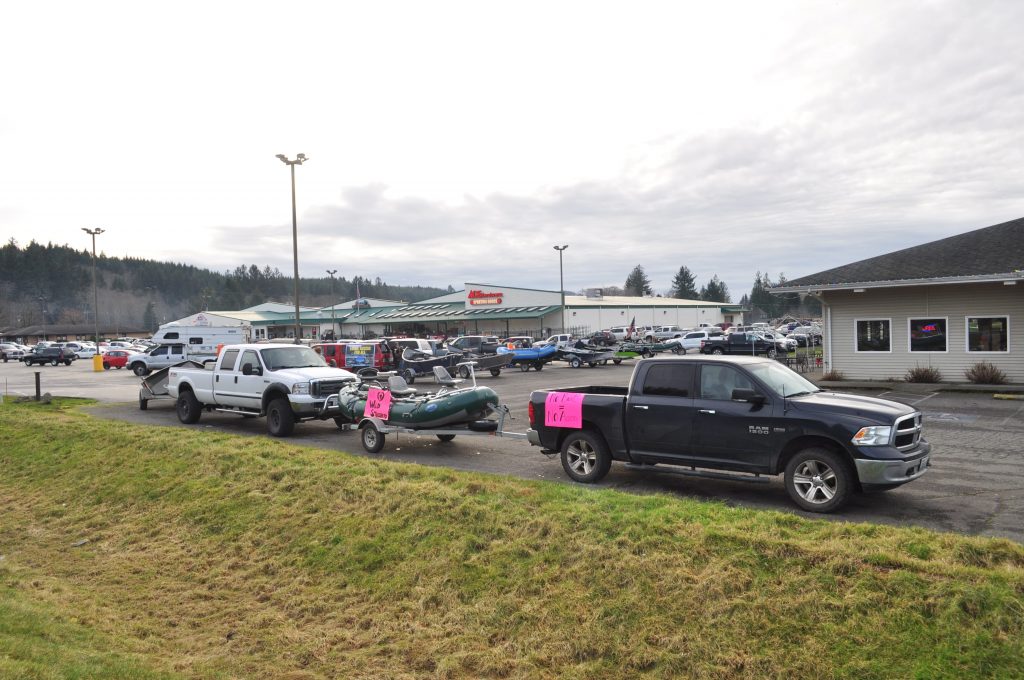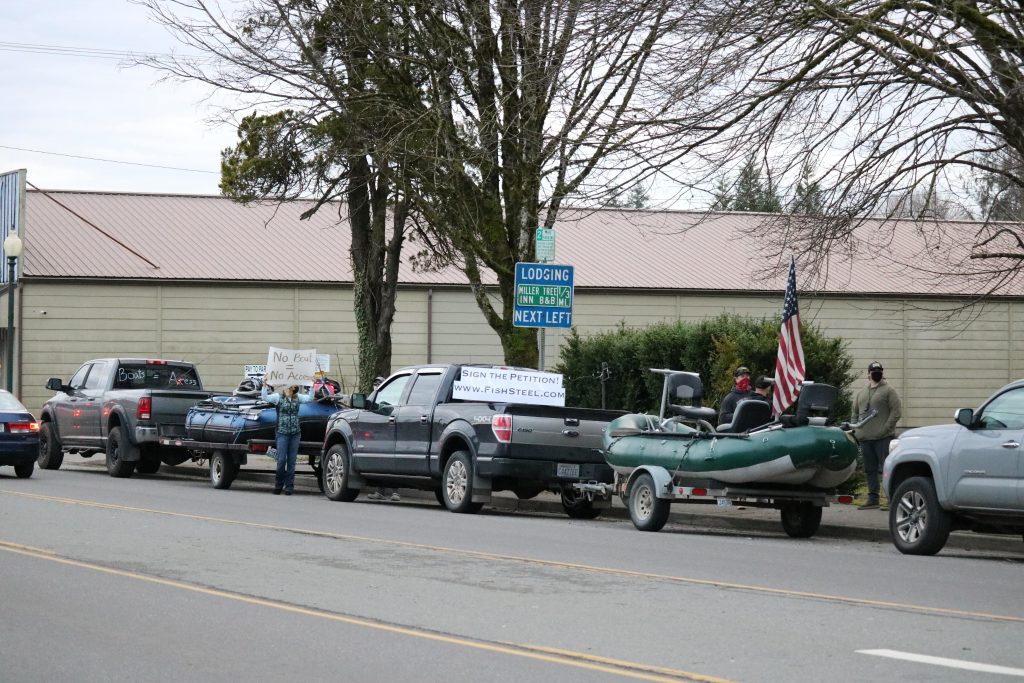
WDFW Holds Firm On Coastal Steelhead Restrictions; Rally Draws 50 Boats
WDFW held its ground on coastal steelhead restrictions, turning down proposals from Olympic Peninsula guides who yesterday held a rally in Forks to protest the most controversial element – the boat-fishing ban.

They had also asked for gear regulations to be eased on the Quillayute, Hoh and Wynoochee and that those rivers be kept open longer than currently scheduled.
But the agency is sticking with the blanket rules it adopted last month in response to continued “grave concerns” about low returns of wild steelhead on a majority of streams from Forks to Pe Ell to Naselle in recent years.

“What we need is the confidence that whatever fisheries we prosecute this year result in fewer wild fish mortalities,” said WDFW’s Kelly Cunningham this afternoon.
That will be a disappointment to those who joined Thursday afternoon’s parade of an estimated 50 boats through the fishing capitol of the West End, as guides and anglers from as far away as south King County alike showed their support for being able to fish out of the craft, the most effective way to catch winter steelhead.

Boats can still be used for transportation down rivers, but according to the Fork-based Olympic Peninsula Guides Association, angler numbers have “steeply declined” since the restrictions were announced by WDFW last month.
“The rule changes and drastic reduction in fishing tourism have already had a significant impact on the rural economies of the coast,” an overnight OGPA press release states.
All of that was the subject of a Tuesday afternoon hearing before state Sen. Kevin Van De Wege (D-Sequim) and members of the Washington Senate’s Agriculture, Water, Natural Resources & Parks Committee.
Guide Bill Meyer told lawmakers that a nonscientific survey of nearly 50 coastal outfitters found that they expected to lose $1.425 million in revenues – about $29,000 each – with around $280,000 in deposits having had to be refunded.
He added that those figures don’t take into account losses for restaurants, hotels and other businesses tapping into the stream of anglers to this fishy location at an otherwise quiet time of year.
Meyer, along with three other coastal guides, also saw a chance for some flexibility given relatively stronger runs to a few rivers and late hatchery steelhead to harvest on another. They laid out several options they came up with for easing restrictions on the Quillayute, Hoh and Wynoochee Rivers, which senators asked WDFW to review and get a response back asap.

That reply came late this morning from Cunningham, the agency’s Fish Program director.
He wrote that opening the Quillayute to fishing out of drift boats or pontoons and liberalizing gear regs on it would create “uncertainty around increased fishing pressure” that would in turn place “unacceptable risk on the only river expected to meet or exceed the escapement goal by a significant margin.”
The preseason forecast called for 3,376 fish above spawning escapement needs, but two of its tribs were expected to be below their benchmarks. The coastwide restrictions are estimated to chop the overall sport catch in more than half and help runs reach goals.
“In addition, this rule provides a potential buffer for encounters of wild steelhead during spring Chinook targeted fisheries in the late spring and early summer in the case that forecasts for spring Chinook support sport fisheries,” Cunningham added.
Similarly opening the next major system to the south “provides risk to long term stability of steelhead populations in the Hoh River and increased uncertainty around meeting shared conservation and allocation agreements with tribal comanagers,” he stated.
And OKing boats on the Wynoochee through Feb. 28 to access hatchery steelhead “would likely limit opportunity later in the season given that approximately 18 percent of the Chehalis River wild population spawns in the Wynoochee River based on redd counts over the last 25 years,” Cunningham wrote.
WDFW’s denial was presaged by statements from Director Kelly Susewind this morning before yet another legislative committee, Rep. Mike Chapman (D-Port Angeles) and the House Rural Development, Agriculture and Natural Resources.
“We have to protect all the runs. To protect them all, we felt the one-size-fits-all approach worked best,” Susewind told representatives.
Asked by Vice Chair Rep. Sharon Shewmake (D-Bellingham) why, if the runs were in such bad shape, WDFW hadn’t just closed the season, Susewind replied that given the restrictions put in place there was room to still provide some fishing, balancing the agency’s conservation and opportunity mandates.

